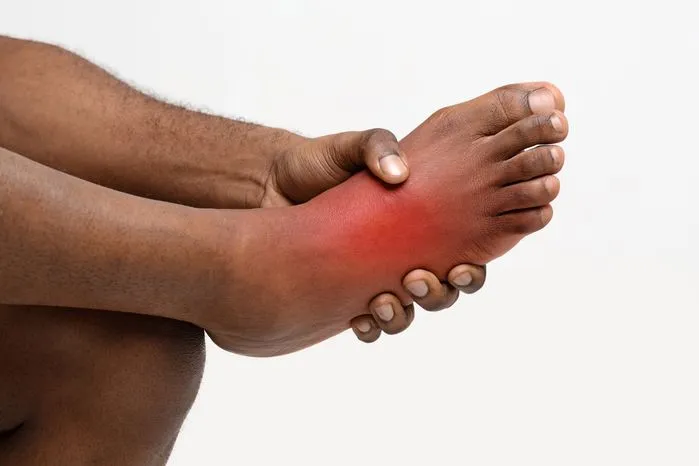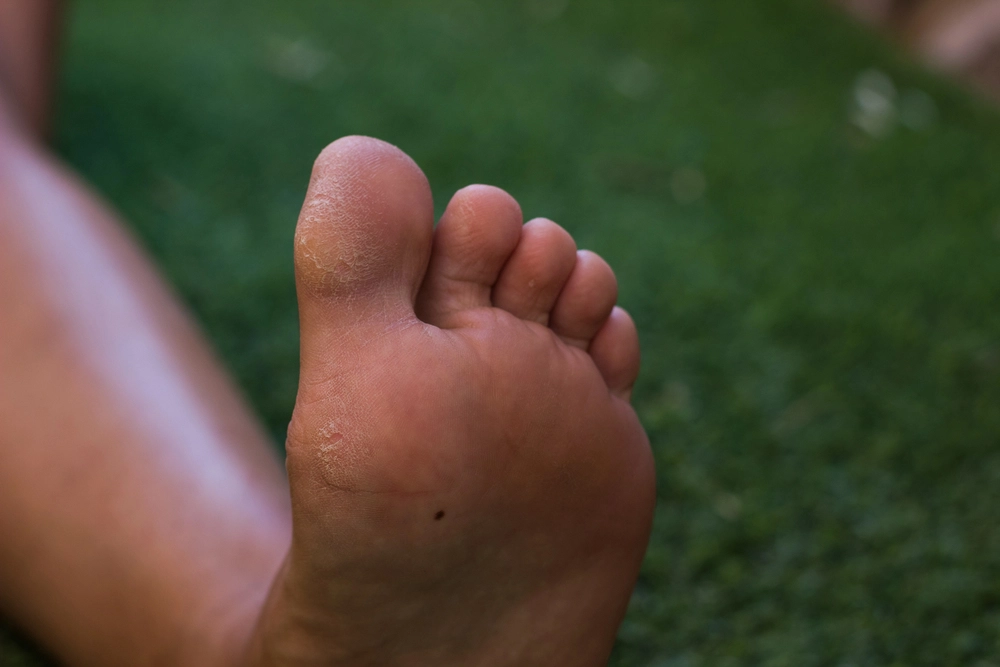
The ankle is the area where bones of the leg and foot meet. It facilitates the up and down motion of the foot. Ankle pain is any kind of pain or discomfort affecting any part of the ankle. It results from injury or inflammation in the bones, cartilage, joint space, ligaments, tendons, or muscles, causing ankle pain when walking.
Common ankle pain symptoms include swelling, ankle pain, heel bruising, instability, stiffness, weakness, and discoloration of the ankle joint. Some patients also feel some numbness or tingling, inability to bear weights on the affected ankle, as well as ankle pain without injury.
Causes of Ankle Pain
Pain in the ankle may result from several injuries and conditions. Some of the most common ankle pain causes include:
Fractures, Sprains, and Strains
Ankle fractures caused by accidents or injuries range from mild to severe. They may occur at any part of the joint, resulting in ankle pain and swelling.
Sprained and strained ankles are common ankle pain causes. A sprain is the stretching or tearing of ligaments – fibrous connective tissue that attaches bone to bone. Ankle strains involve injury to the muscles or tendons – strong fibrous collagen tissues attaching a muscle to a bone – leading to excessive ankle pain on walking. A torn tendon or ankle pain ligament may need surgical repair.
A sprain or strain may cause inflammation and swelling in or near the tarsal tunnel, a narrow space that lies on the inside of the ankle next to the ankle bones. This results in ankle pain nerve compression in the posterior tibia.
Achilles Tendinitis and Tendinosis
The Achilles tendon is the largest in the body. It runs down the back of the lower leg and aids in walking, running, climbing stairs, jumping, and standing on your tiptoes.
Achilles tendinitis is one of the ankle pain reasons and is caused by inflammation or irritation of the Achilles tendon. Tendinosis happens when the tendon degenerates due to unresolved Achilles tendinitis.
Ankle Bursitis
The ankle bursa is a small fluid-filled sac that cushions and lubricates the ankle joint. It’s found at the back of your foot, between the heel bone and the Achilles tendon.
Retrocalcaneal bursitis happens when the bursa becomes inflamed causing ankle pain and swelling. This can occur under stresses from movement or an impact injury, as well as pressure from ill-fitting shoes. Another form of bursa known as the subcutaneous calcaneal bursa sometimes forms at the back heel below the retrocalcaneal bursa. Inflammation of this bursa causes ankle pain in the heel, especially in young women who love high-heeled shoes.
Arthritis
The ankle joint is formed by three bones each with cartilage that helps prevent ankle pain running injuries by cushioning the spaces between the bones. The cartilages become frayed and thinned as you age. Ankle osteoarthritis occurs when the bones begin to rub against each other causing ankle pain when walking.
Ankle pain without injury could be a sign of rheumatoid arthritis, an autoimmune disease where your immune system mistakenly attacks the body’s tissues. It causes ankle pain on walking and eventually results in bone erosion and joint deformity. Ankle pain treatment for this disease is mostly achieved through surgery.
Posttraumatic arthritis occurs frequently in people who have experienced a traumatic injury like a dislocation or fracture.
Charcot’s Joint
Diabetes can cause nerve damage in the feet. Charcot’s joint occurs when this damage causes a joint to break down resulting in ankle pain or diabetes ligament injuries. A doctor for ankle pain may notice bone dislocation, deformity, or destruction.
Flat Feet
The arch is the space between the heel and the ball of the foot. It mostly creates a hollow space as you stand. In some people, it remains flat causing ankle pain, flat feet wear and tear. Using arch supports and supportive shoes can be a remedy for ankle pain.
Other Infections
Other ankle pain types result from infections, including cellulitis and osteomyelitis which require ankle pain treatment.
Risk Factors for Ankle Pain
You can get ankle pain without injury or from lifestyle-related factors. Some risk factors for ankle pain include:
- Poor athletic conditioning: Athletes are more prone to ankle injuries than any other population. Without a warm-up session, muscles and ligaments are less flexible leading to ankle pain from running and walking.
- Being overweight: Obesity is an ankle pain reason that causes tendonitis, and osteoarthritis. Excess body weight exerts a lot of pressure on the joints causing ankle pain symptoms like inflammation and ankle pain nerve damage.
- Improper shoes: You can get ankle pain ligament injuries from not wearing the appropriate supportive footwear. Wearing shoes that don’t fit properly, or high-heeled shoes can also cause ankle pain from walking.
- Prior history of ankle pain: Persons who have had ankle injuries in the past run the risk of a repeat occurrence. It’s best to consult your ankle pain doctor to learn of any trigger factors and treat ankle pain, ligament injuries, and arthritis.
Ankle Pain Prevention
Not all ankle injuries can be prevented. The remedy for ankle pain and prevention will depend on the cause. An ankle pain doctor may recommend certain practices such as maintaining good health to reduce ankle pain, running injuries, and swelling.
Don’t ignore pain. Take a break if a movement becomes too uncomfortable. Strengthening other muscles also helps support your ankles and reduce the risk of ankle pain from running. Maintain a healthy weight through exercise and the right diet for ankle pain diabetes prevention.
Always wear the right footwear to prevent ankle pain from running. Your shoes should provide adequate support, especially when participating in sports. To reduce ankle pain from walking, avoid sandals, and shoes that are too loose.
Orthotic inserts can aid in supporting, stabilizing, and ensuring proper foot alignment to prevent ankle pain induced flat feet induced. You can get them from the store, or have them customized by your doctor for ankle pain.

















